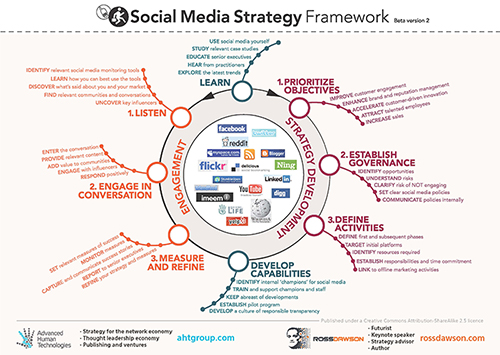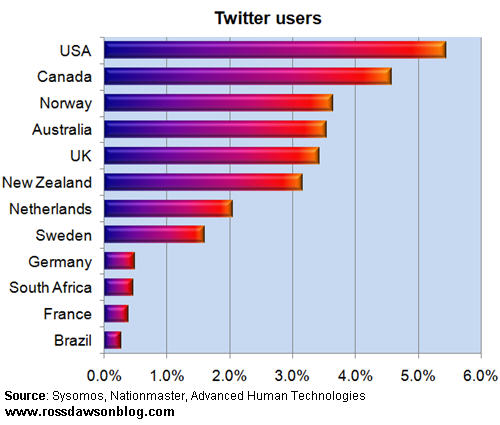Launch of Social Media Strategy Framework
Today we launch our Social Media Strategy Framework. This provides guidance and a frame on how organizations can approach engaging with social media, following in the tradition of our highly popular frameworks such as Web 2.0 Framework, Future of the Media Lifecycle, and Influence Landscape.
Click on the image to download pdf
[UPDATE:] The image and file above is of the updated Beta version 2 of the Social Media Strategy diagram – see here for a brief explanation. Click here to download the Beta version 1 diagram.
[UPDATE 2:]
The Social Media Strategy Framework has being translated into:
Social Media Strategy Framework in Chinese – ????????
Social Media Strategy Framework in Dutch – Sociale Media Strategie Kader
Social Media Strategy Framework in French – Plan Stratégique des médias sociaux
Social Media Strategy Framework in German – Social Media strategische Rahmenrichtlinien
Social Media Strategy Framework in Japanese – ?????????????
Social Media Strategy Framework in Korean – ????? ?? ?????
Social Media Strategy Framework in Portuguese – Modelo Estratégico dos Meios de Comunicação Social
Social Media Strategy Framework in Russian – ????????? ????????? ? ?????????? ?????
Social Media Strategy Framework in Spanish – Encuadre de Estrategia de Medios Sociales
Social Media Strategy Framework in Turkish – Sosyal Medya Strateji Çerçevesi
This is a Beta version, pulled together to release before The Insight Exchange’s Social Media Strategy event today. I can already see some improvements to be made, but I would love to get your thoughts on what’s wrong (and right) for this to be taken into account for the next version.
The Framework begins with LEARN, follows two streams of ENGAGEMENT and STRATEGY DEVELOPMENT, and comes together in the ongoing imperative to DEVELOP CAPABILITIES.
The five key points for each element are also written below.
LEARN
Use social media yourself
Study relevant case studies
Educate senior executives
Hear from practitioners
Explore the latest trends




